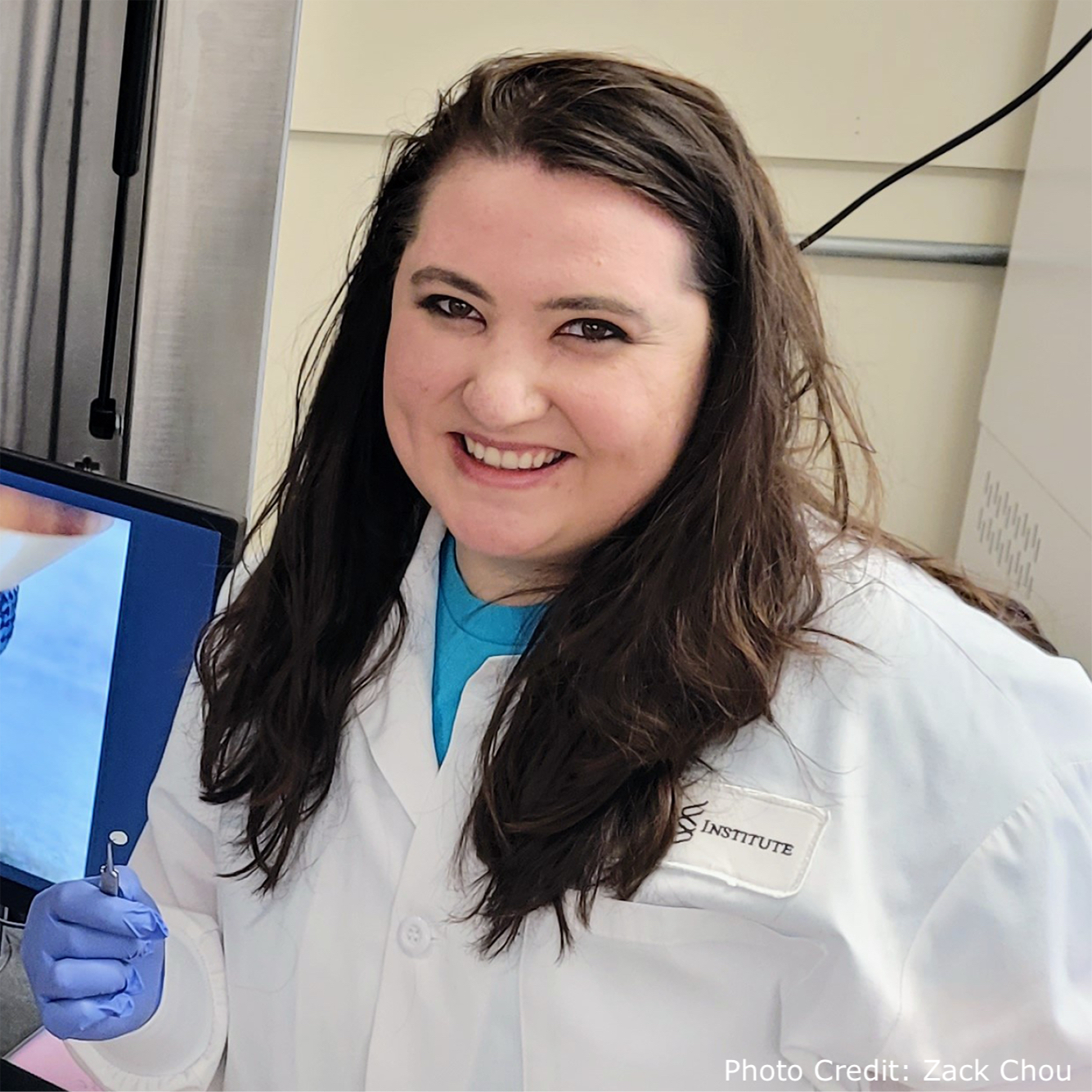Nicole Black
Nicole Black, who recently graduated with her PhD from Harvard University’s John A. Paulson School of Engineering and Applied Sciences (SEAS), is teaching the body to heal itself. As part of her work at SEAS and the Wyss Institute for Biologically Inspired Engineering at Harvard, Nicole invented PhonoGraft, a new material and procedure to repair eardrums after damage due to infection or trauma such as blast injury. Nicole is the winner of the 2021 $15,000 “Cure it!” Lemelson-MIT Student Prize for PhonoGraft and a new type of tympanostomy tube (“ear tube”) that improves upon existing technology.
Growing up in Detroit, Michigan, Nicole believed engineering was all about cars. She was more interested in medicine, initially wanting to be a physician and individually treat patients. But after joining a robotics team in high school (the “ThunderChickens”) and learning how engineers design devices that address a range of problems, Nicole decided she wanted to design solutions for people on a large scale. That’s when Nicole discovered biomedical engineering and dedicated herself to the field. In 2010, upon high school graduation, Nicole was named a U.S. Presidential Scholar whereby she met President Barack Obama at the White House.
Nicole completed her undergraduate education at Boston University’s College of Engineering before arriving at Harvard in 2014. During her undergraduate studies she worked at Vanderbilt University, University of Sydney, and Columbia University. During her graduate studies, Nicole was awarded a Marie Curie Dissertation Fellowship from the American Association of University Women, a National Science Foundation graduate research fellowship, and a Baxter Young Investigator Award.
Working to improve ear health is personal for Nicole. She had many ear infections as a child and had traditional ear tubes implanted multiple times. She later discovered that she has scar tissue and slight hearing loss as a result, motivating her to solve challenges in the ear and hearing space. Nicole decided to carry out her graduate research at the Wyss Institute for Biologically Inspired Engineering and Mass Eye and Ear hospital where she was co-advised by Prof. Jennifer Lewis and Dr. Aaron Remenschneider, respectively. She also participated in the Speech and Hearing Bioscience and Technology Program in the Harvard Division of Medical Sciences.
Nicole’s PhonoGraft invention is produced by 3D printing a new, synthetic material in a scaffold design that mimics the unique characteristics of the eardrum. After this device is inserted during a simple 30 minute outpatient procedure, the natural eardrum cells use PhonoGraft as a guide for regeneration, giving rise to an organic and architecturally tuned eardrum. The patent for the PhonoGraft device is issued, with another pending patent for the novel material. This unique technology may one day be applied to other areas of the body, such as vascular and nerve tissues. Nicole’s work has already gained considerable attention. She and her team were recently awarded a Small Business Innovation Research (SBIR) Phase II grant from the Department of Defense.
Nicole is committed to increasing engagement and retention of youth and women in Science, Technology, Engineering, and Math (STEM) fields. Nicole has volunteered in elementary schools and mentored more than a dozen K-12 and undergraduate students in conducting their own engineering research projects. She is a founding member of New England Graduate Women in Science and Engineering, was on the Executive Board for Harvard Graduate Women in Science and Engineering, and coordinated the Women in Science, Technology, Engineering, and Mathematics Mentorship Program for undergraduate and graduate women in STEM at Harvard College’s Women’s Center.
Nicole is dedicated to ensuring that inventions are effectively translated into biomedical devices that will improve healthcare at both the individual and societal levels. She continues to collaborate with research and clinical institutions, medical professionals, and patients around the world to make that a reality.


